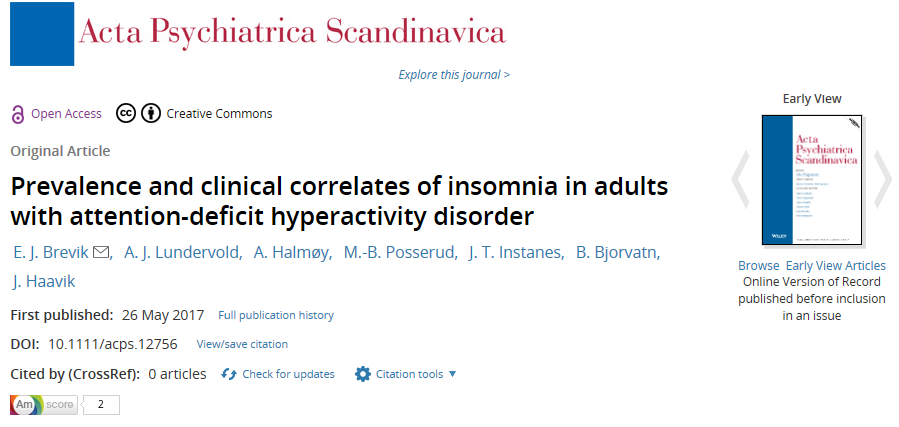Abstract
Objective
To investigate the prevalence of insomnia in adults with Attention-deficit hyperactivity disorder (ADHD) and its association with clinical subtypes, current ADHD symptoms, and stimulant treatment.
Method
We obtained diagnostic information, symptom rating scales and treatment history from clinically ascertained adult ADHD patients diagnosed according to DSM-IV criteria (n = 268, mean age 38.1 years) and randomly selected population controls (n = 202, mean age 36.5 years). The Bergen Insomnia Scale (BIS) was used to measure insomnia. ADHD symptom domains were self-rated using the Adult ADHD Self-Rating Scale.
Results
Insomnia was far more frequent among adults with ADHD (66.8%) than in the population controls (28.8%) (P < 0.001). Insomnia was more common in adults with the combined subtype than in those with the inattentive subtype (79.7% and 55.6%, respectively) (P = 0.003). For self-reported current ADHD symptoms, inattention was strongly correlated to insomnia. Patients currently using stimulant treatment for ADHD reported a lower total insomnia score compared to patients without medication (P < 0.05).
Conclusion
Insomnia was highly prevalent among adults with ADHD. The lower insomnia score in patients on current stimulant treatment suggests that stimulant treatment is not associated with worsening of insomnia symptoms in adult ADHD patients.
